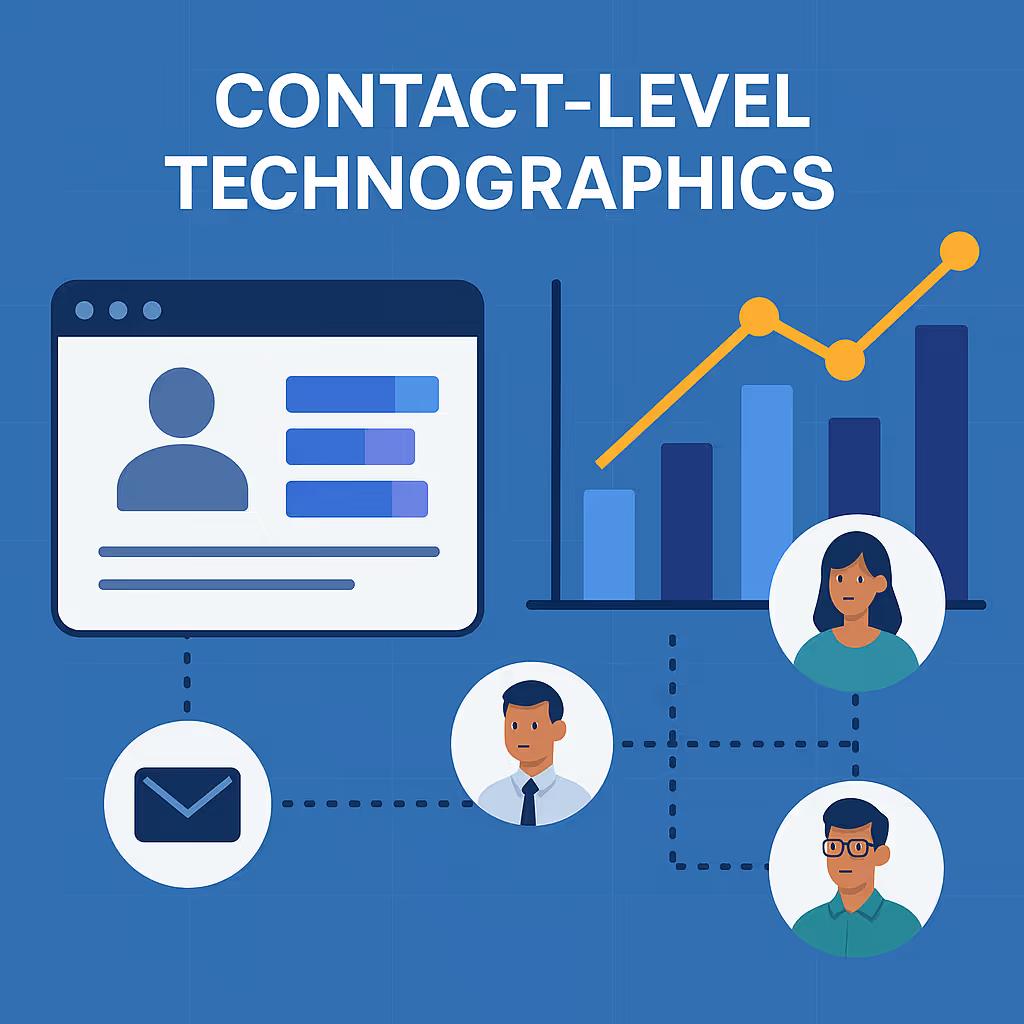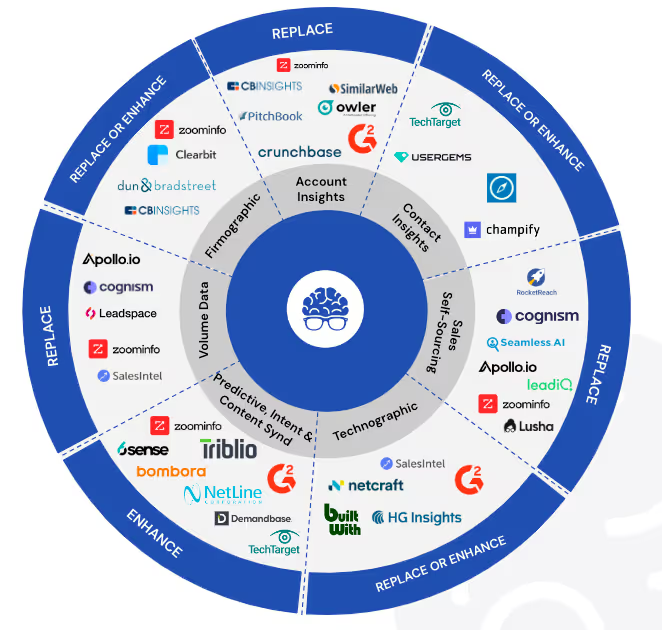The Basics of B2B Lead Generation
In the accelerating pace of the digital tech world, especially in the B2B SaaS space, mastering the fundamentals of B2B lead generation is an essential step to foster sustainable business growth. B2B lead generation is a dynamic and ongoing process that is set in motion by a company's sales and marketing teams to identify and engage potential clients who have expressed interest in their business offerings.As a leading provider of precision data, LeadGenius is positioned in the market as a powerful tool integral to successful B2B lead generation, ensuring businesses have access to precise, custom, accurate and targeted data sets to streamline their lead generation efforts.
Exploring the Lead Generation Process: How Do Prospects Transform into B2B Leads?
B2B leads are generated through multiple interactive channels and activities with potential clients. Such interactions may include sales teams engaging in a telephone conversation, receiving a direct expression of interest via digital channels like clicking through to your website from a Google organic search result, paid Google Ad, responding to email outreach, from LinkedIn post or ad, etc.Then these prospects start to transform even further into actual leads when the SDR/BDR team is responding to these interactions as they progress and raise their hand, such as an inquiry or request from a lead for more information about the company's products or services, and then even inviting a potential lead and hand raiser to experience a live demonstration of the product or service.This is certainly not an exhaustive list of potential interaction and conversion points but you get the idea. These interactions often mark the first steps in the lead conversion process, indicating a potential client's interest in the company's offerings.
Harnessing B2B Lead Generation: Key Roles and Responsibilities
To make the B2B lead generation process effective and efficient, sales and marketing teams need to work in close collaboration. These teams need to be strategically aligned, with clear communication and shared goals, to ensure the steady influx of high-quality leads. They employ a variety of B2B lead generation tools and strategies, effectively combining their expertise to convert prospects into long-term clients.
The Sales Team: Engine of B2B Lead Generation
In the context of sales, the team is usually divided into two pivotal role types. Role Type #1 Sales Development Representatives (SDRs), Business Development Representatives (BDRs), and Role Type #2 Account Executives (AEs).SDRs, BDRs are primarily responsible for identifying and engaging with potential leads, evaluating their potential, and setting up meetings and demos. AEs on the other hand, are in charge of conducting product demos, closing deals, and ultimately, generating revenue.This two-pronged structure offers multiple benefits. It establishes a solid B2B lead generation pipeline of qualified, ICP leads vetted and further qualified by SDRs, BDMs, and BDRs that are then passed off to AEs who are continuously creating opportunities from these leads to build revenue. This division of labor and effort also allows for greater specialization, with each team member becoming an expert in their particular role. Furthermore, this structure provides a clear roadmap for career development and progression.
The Marketing Team: Strategists of B2B Lead Generation
On the marketing front, teams are usually segmented into demand generation marketers and growth hackers. While their work may overlap, their approaches to marketing and lead generation are significantly different.Demand generation marketers focus on sourcing and nurturing leads throughout the entire revenue cycle, guiding them from brand awareness to customer loyalty. Growth hackers, in contrast, concentrate on fueling rapid revenue growth with minimal spending. Regardless of their contrasting approaches, both categories rely heavily on data analysis, precisions data and ongoing testing to drive their decision-making processes, with their ultimate aim being successful B2B lead generation that can be attributed back to actual revenue growth.
Advanced Techniques in B2B Lead Generation: Unleashing Potential
B2B lead generation is facilitated through a diverse range of sales and marketing activities. Each activity employs its unique set of tactics and methodologies to attract and convert leads.
Innovative Sales Techniques for Robust B2B Lead Generation
Sales teams deploy several strategies, such as cold calling, outbound email campaigns, social selling, and sales cadences. Cold calling involves SDRs and such reaching out to potential B2B leads, pitching their product's or service's benefits, and qualifying the lead for future engagement. Outbound email campaigns involve reaching out to leads via email, sparking conversations, and building relationships.Social selling involves following potential leads on social media platforms, engaging with them, and fostering relationships over time. LinkedIn is a major platform for this activity in the B2B space. Sales cadences refer to a systematic series of touchpoints including calls, emails, and social engagements intended to increase the chances of a lead responding. The culmination of these strategies is to persuade the lead to participate in a product demo conducted by an AE.
Marketing Tactics: Fueling B2B Lead Generation
Marketing teams employ paid ads, SEO tactics to increase organic search traffic, growth hacking tactics, content marketing, and account-based marketing (ABM) to drive lead generation. Growth hacking involves deploying unconventional strategies to create demand and foster business growth quickly. Content marketing involves creating and sharing relevant, valuable content to attract and engage their target audiences, while ABM involves identifying key decision-makers in a particular company and tailoring personalized marketing campaigns to them. The goals of these activities can range from attracting new leads to encouraging existing leads to finalize a purchase.
Technological Revolution in B2B Lead Generation: Accelerating Progress
Technological advancements have a profound impact on B2B lead generation processes. Automation tools handle tasks such as cold calling and outbound emailing, making the process more efficient, while Customer Relationship Management (CRM) systems store and analyze data gathered from interactions with B2B leads.The exponential growth in sales and marketing technology, particularly within the B2B sector, has resulted in a wide array of tools that assist almost every aspect of B2B lead generation. Sales Engagement platforms such as Outreach or Groove and Marketing automation systems such as Pardot or Marketo, often offered under a SaaS model, form a company's technology stack and significantly enhance the efficiency and effectiveness of their lead generation efforts.Through effective B2B lead generation strategies, companies can tap into new markets, bolster sales, and secure future growth.As an industry leader, LeadGenius provides businesses with the accurate data they need for precision-targeted B2B lead generation, setting the stage for continued success.




